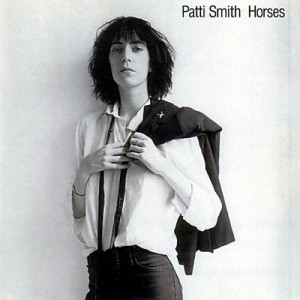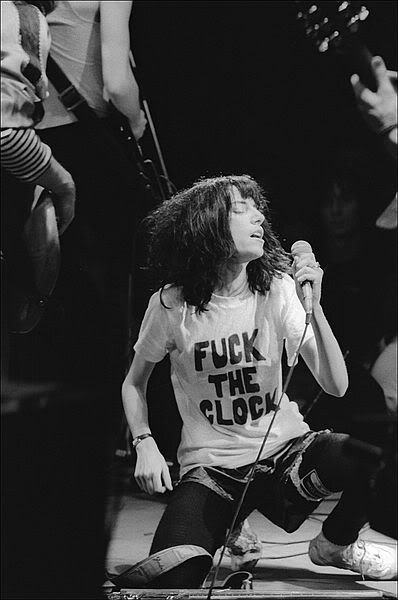
A Classic Of Classics, The Photograph Gracing The Cover Of "Horses" Was Taken By Robert Mapplethorpe At Greenwich Village.
Jesus died for somebody’s sins but not mine.
What an unrepentant way to start an album and to announce a whole career. Patti Smith’s debut came in 1975, and it was the first piece of vinyl whose surges bristled with the unsurpassed fire that was growing within the walls of the mythic CBGB, and which would gloriously run rife before a year had elapsed.
Patti (who was slightly older than members of most other acts associated with the famed venue) was certainly one of its most articulate participants, in no small part owing to her early explorations of different branches of visual and performance arts. She brought some of the most literate considerations to a scene that was also nurtured by the contributions of artists like Tom Verlaine (with whom she was briefly involved, and who actually added a typical all-or-nothing solo to the song “Break It Up”) and the Talking Heads (a band that I have never been that keen on – and I couldn’t love XTC more. Go figure.) And her actual romantic interest at the time “Horses” was released was photographer Robert Mapplethorpe, whom she had met at Pratt Institute (Brooklyn) and who would make a vital contribution to the album: its actual cover shot.
This androgynous photograph has deservedly gone down in the history of music as an absolute visual achievement. It captured the willingness of punks to transcend the blandness of conventional categorizations as much as the music included on the actual record, which Smith herself defined as “Three chord rock merged with the power of the word”.
You can’t call “Horses” a punk record, mind you. You can (and should) term it a record that set the scene for the arrival of a more vibrant and violent force of expression than what was available before.
In many places, “Horses” is an album that asserts the role of women in rock, what with male characters who are sodomized as in the first segment of “Land” and songs about female characters that defy conventionalisms such as “Kimberly” (a song which Patti wrote to deal with the lingering feelings of the baby she had to give for adoption when she was much younger).
You can’t call really call a record with songs like “Gloria” or “Birdland” a punk album. “Gloria” references the Them song by the same name, and it was a clear nod to fellow CBGB pioneers Blondie. And “Birdland” is a piece of jazz that might even mar the flow of the disc, but which was actually an important piece for Patti if only because it acted as a symbolization of her mother. Continue reading

